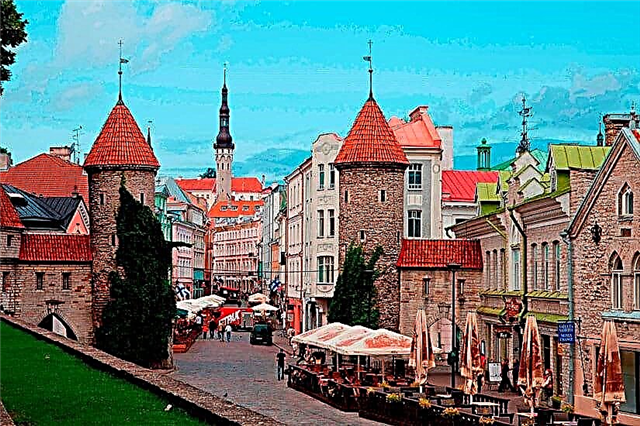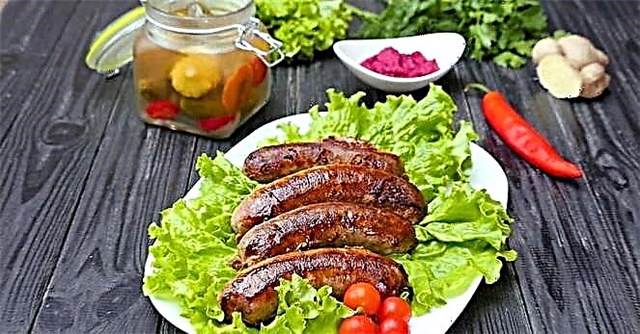Nuremberg sausages are a culinary signature not only of Nuremberg, but of the whole of Germany. You will not find such a variety of sausages in any other country in the world. About 1,500 different varieties are produced here. Each region is famous for its unique recipes, but it is the sausages invented in Nuremberg that are not only considered the most delicious, but are also prepared according to one of the oldest recipes.

Culinary traditions
Real Nuremberg sausages can only be tasted in Nuremberg. By the way, Nuremberg is the capital of Franconia (northern part of Bavaria) - it is a large-scale industrial center of Germany, the second most important city in Bavaria in terms of importance and population after Munich.
Interestingly, in 1997, the official Association for the Protection of Nuremberg Sausages was created, whose duties include monitoring the invariability of the traditional recipe, compliance with the production technology and copyright of this dish.
And in 2003, Nuremberg sausages, called Rostbratwurst, became the first sausages in the world to be included in the EU PGI register.
According to the patent, only sausages produced according to a strict official recipe and on the territory of Nuremberg can receive the official EU mark and the “original” mark.
More than 2 million original sausages are produced in Nuremberg every day for the domestic and foreign market.
Traditionally, this dish is ordered with a portion of 6, 8, 10 or 12 sausages and always with horseradish, in the local dialect called Kren. Potato salad or sauerkraut - Sauerkraut is served as a side dish.
And the most popular snack in the old town is “three in a roll” (German: Drei im Weckla). This delicacy can be bought literally on every corner. It looks like three small sausages in a round crispy Weggla bun.
Original recipe
One of the main differences between Nuremberg sausages is its white color, even in the cooked dish. This is proof that no artificial colors are added to the product, only natural ingredients. The cooking recipe is simple, but in order to cook sausages close to the original, you need to observe several subtleties.

To prepare real Nuremberg sausages, you will need:
- pork neck - 850 g;
- beef shoulder - 150 g;
- cold water - 100 ml;
- salt - 4 tsp;
- marjoram 1 tsp;
- black pepper - ½ tsp;
- nutmeg - ½ tsp;
- coriander - ½ tsp;
- dried ginger - ½ tsp;
- ka
- rdamon - ½ tsp;
- lemon juice - 2 tbsp. l .;
- sugar - ½ tsp;
- lamb casings - 24-26 mm in diameter;
- grated hard cheese - to taste.
Nuremberg sausages are a combination of beef and pork. Moreover, the pork should be fat enough and coarsely ground.
It is advisable to grind the meat in a meat grinder yourself. Cold water, lemon juice and spices are added to the minced meat, the main of which is marjoram, as well as, if desired, cheese.
Minced meat does not need to be kneaded very much, on the contrary, the ingredients are mixed together carefully. Then the shell is filled with minced meat. The most convenient way to do this is using a special attachment that comes with the meat grinder, but you can also manually.
An obligatory component of classic Nuremberg sausages is the lamb shell. It is very thin, due to which the products are small in size, which is also considered their distinctive feature, with which a lot of legends are associated.
A real Nuremberg sausage should be between 7 and 9 cm in size and weigh between 20 and 25 grams.
Boil the formed Nuremberg sausages for 10-15 minutes at a temperature of 60-70 ° C, without boiling. To make them juicy, it is better to cook them in one bunch, without dividing them by the piece.

After this process, hot sausages must be dipped in cold water, and only then sent to the fire of a hot grill. You need to fry them without oil, since the pork in the composition will give the necessary fat. If this is not possible, you can fry in a pan, while adding a little oil to get a golden brown crust.
Other types of sausages in Germany
If you order "German sausage" in Germany, they will hardly understand you correctly. Each type has a separate name depending on the recipe, cooking technology and ingredients used. So, in addition to Nuremberg sausages, there are many more varieties for every taste, here are just a few of them:
- Weisswurst or Bavarian sausages. They are in no way inferior in popularity and taste to the Nuremberg ones, and some argue that they even surpass them.
- Bratwurst is any sausage prepared by frying. Hence the name "bro", which is translated from German as "fry". The sausage is fried in a pan or grill. Fried potatoes or stewed cabbage are usually served as a side dish.
- Rindswurst - These sausages are made from ground beef to which whipped egg white is added, and from the spices - white pepper and paprika. Rindswurst is cooked by hot smoking, about 1-1.5 hours.
- Thuringer - grilled and sometimes poured with beer during the frying process. For the preparation of minced meat, not fatty pork or beef is chosen, which is not twisted, but finely chopped. Spices such as garlic, cumin, marjoram and pepper are added here.
- Bockwurst - made from fatty pork and lard, sometimes a little beef is added. The minced meat is mixed with ice and various spices are added: ginger, nutmeg, paprika and coriander. For cooking, the sausage is first smoked for about 60 minutes, and immediately before serving it is heated in hot water.
- Saure Zipfel - the distinctive feature of these sausages is their bluish-gray color, which is achieved by a special preparation method. According to the recipe, they are boiled in broth with vinegar, onions, wine and spices.
Not sausages alone
Traditional German cuisine is distinguished by a wide variety of meat dishes. Local chefs pay special attention to pork, which is prepared in every possible way. Perhaps the most delicious is Nuremberg pork.
Talking about the local cuisine can be long and colorful. Each dish deserves a separate publication, so we will briefly list the most popular ones:
- Icebine is a traditional baked pork knuckle commonly found on the festive Christmas table.
- Potato salad is the most famous of the German side dishes. To prepare the dish, boiled potatoes are cut with pickled cucumbers, fried bacon, onions and seasoned with sour cream.
- Sauerkraut. According to local traditions, sauerkraut is additionally stewed or fried with pieces of pork in a pan before eating.
- Eintopf is a thick meat soup with vegetables. In Germany, as a rule, it serves as both the first and second course. This dish is prepared in the oven in special pots, in which it is served on the table.
- Gingerbread and pretzels are famous pastries that are plentiful in shops and street stalls.
- Rote grütze is a dessert made from a mixture of red berries: strawberries, cherries, raspberries.
- Black Forest cake (Black Forest). It contains a lot of chocolate and cherries.
Conclusion
Arriving in Germany, you should definitely try Nuremberg sausages, because it is this traditional dish that best conveys the local flavor. If you are not lucky enough to get to this country, you can cook these sausages yourself. Do not forget that their main secret is marjoram. It is this spice that makes the taste so traditionally “German”.
Sausages are usually served with sauerkraut or potato salad - the most famous German side dishes.











